Best guitar wireless systems 2025: set your playing free, from the rehearsal room to the stage
Fed up with cumbersome cables? Here's our pick of the best wireless guitar systems for every budget
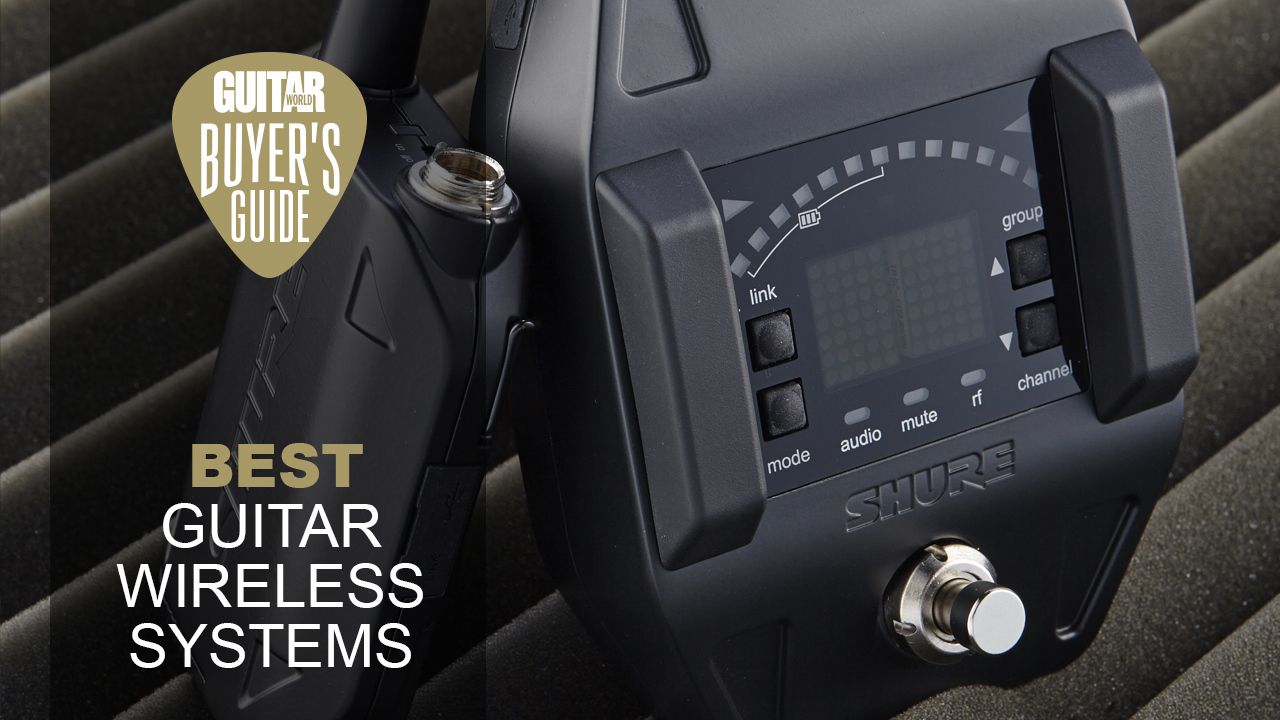
If you’ve ever felt the desire to be free of the shackles of traditional cables, then it’s time you invested in one of the best guitar wireless systems. Technology has come a long way and there are now a wide variety of wireless systems perfectly suited to different players’ needs, allowing you to freely roam the stage, rehearsal room, or even just wander around your own home.
Gone are the days of having to bust out huge manuals to get your kit working, either – many of the best wireless guitar systems are easy to use and allow for fuss-free operation. There are all sorts of different models out there, all with different wireless ranges, estimated battery life, number of channels, and more. Whether you're after a wireless system that will fit on your pedalboard or something that sits on top of your amp, we've got some great choices for you here.
Sorting through them can be a headache, so we’ve put together a list of what we reckon are the best wireless systems available today, no matter your budget. All of the products in our guides are chosen by our expert writers based on their real world experience as musicians, to ensure you get the best possible product.
Best guitar wireless systems: Quick list
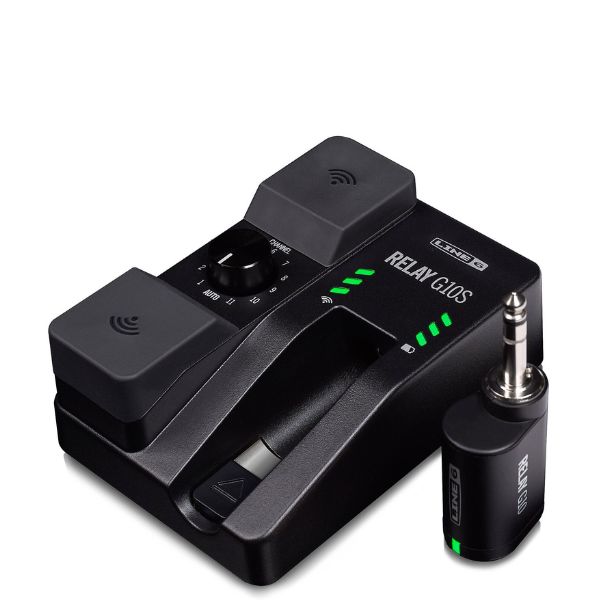
Designed for use with guitar or bass, the Relay G10S can be housed on a pedalboard or beside your guitar amp as a standalone unit. It uses a transmitter with a 1/4-inch connector that attaches to your guitar’s output, much as a Wi-Fi dongle would for a laptop or TV.

This system ships with Shure’s first pedalboard receiver, the GLX-D6, the GLX-D1 transmitter pack, and the WA305 Premium 1/4-inch to TA4F guitar cable that has a locking thread for secure connections between the transmitter and your guitar. We have to say, everything feels secure here and super-tough.
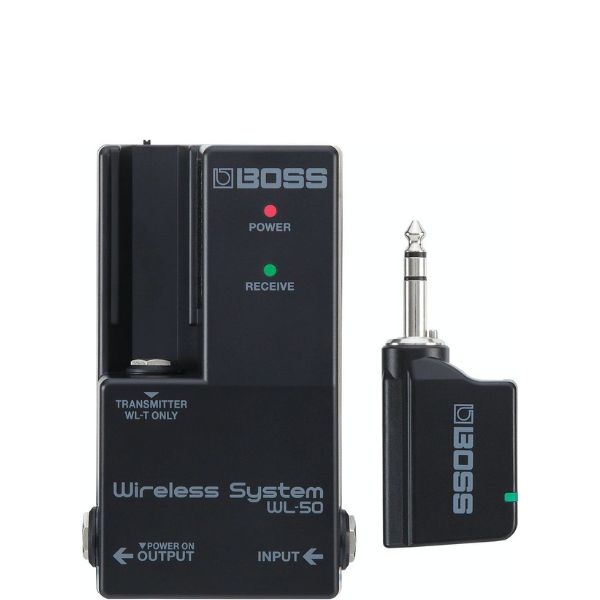
As you might demand of a Boss unit, the WL-50 has a receiver that’s at home on your pedalboard, offering a convenient but excellent sound-quality performance. In our experience, the WL-50 offers ultra-low latency, excellent dynamics, full frequency response, and a very respectable 65-foot range.

If you want a simple-to-use guitar wireless system with a robust connection and near instantaneous pairing, the Positive Grid Spark Link is a no-brainer. It's durably built, lightweight, and fit a huge variety of guitars we tried it on. An excellent choice if it's your first time using a wireless system too.
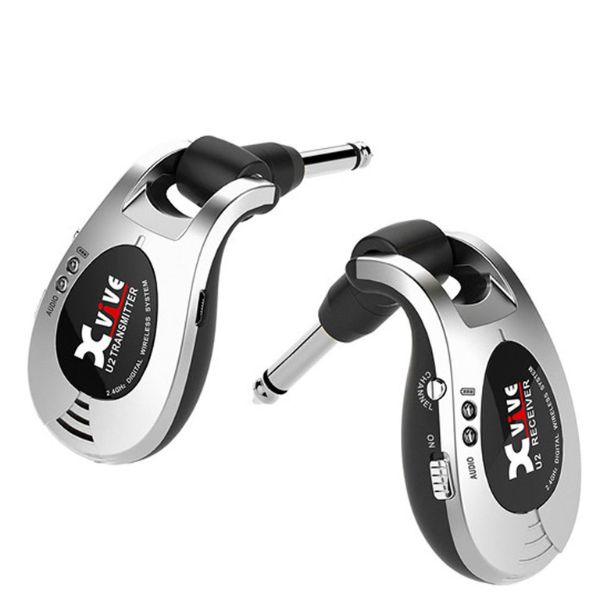
Don’t be fooled – for the money and the unassuming dongle construction, XVive’s U2 has a very respectable range, a full frequency response, and transfers excellent-quality audio. With only 6ms of latency, there is really little to complain about here.

One for professional players, the Shure QLXD14 Wireless Guitar System has a huge amount of functionality for those who play on big stages. As well as the massive range of 100m (or 328ft), it's encrypted with AES-256, and comes in a variety of operating bands to suit whichever stage you're playing.
Best overall
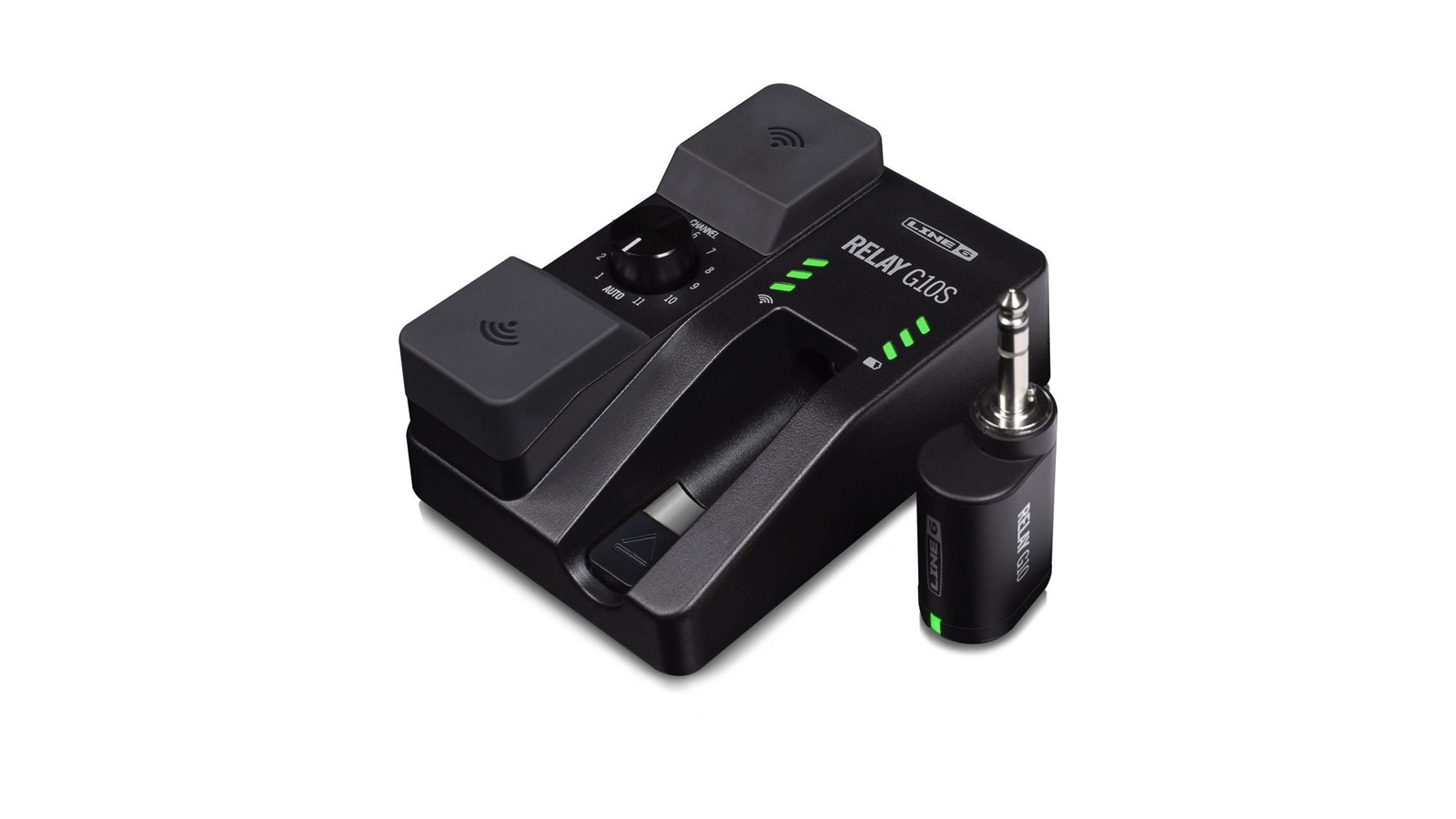
1. Line 6 Relay G10S
Our expert review:
Specifications
Reasons to buy
Reasons to avoid
✅ Buy if you want a simple wireless system you can fit on your pedalboard: The G10S is super easy to set up, even if you've never used a wireless system before and the receiver can be mounted on your pedalboard making it a great option for playing live.
❌ Avoid if you use active pickups: Unfortunately there are some compatibility issues with this unit and active pickups, which may mean your guitar won't work with it.
Designed for use with guitar or bass, the Line 6 Relay G10S can be housed on a pedalboard or beside your guitar amp as a standalone unit. It uses a transmitter with a 1/4-inch connector that attaches to your guitar’s output, much as a Wi-Fi dongle would for a laptop or TV.
With a full frequency response, a wide dynamic range to ensure your signal does not get compressed en route to your amplifier, 24-bit lossless digital audio quality, and Line 6’s Cable Tone tech to emulate the capacitance of a regular guitar cable, the G10S is an excellent system for the price, and offers fuss-free setup.
Best pro option
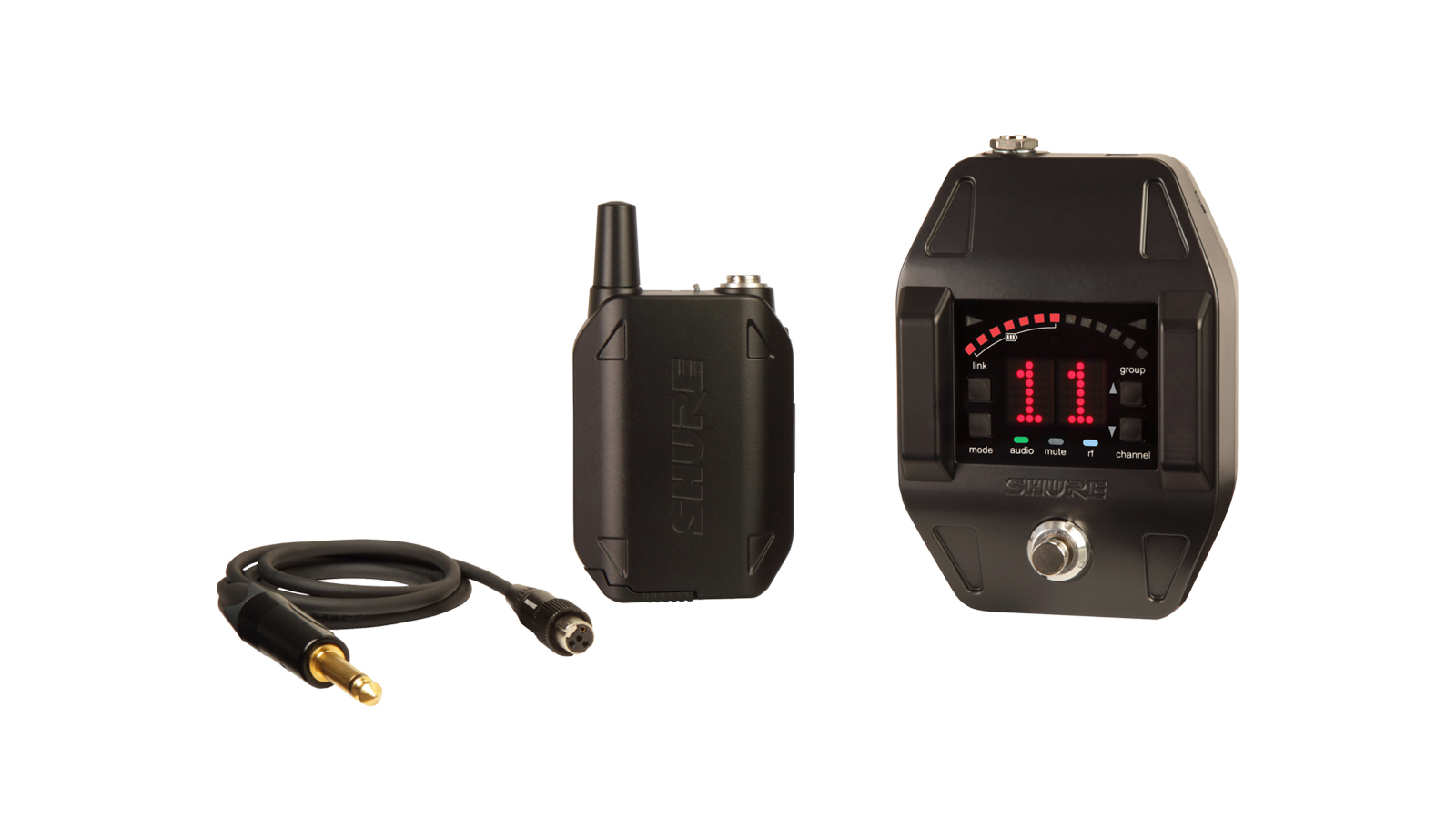
2. Shure GLX-D16
Our expert review:
Specifications
Reasons to buy
Reasons to avoid
✅ Buy if you need a tough wireless system for playing live: Ruggedly built and packed full of features like auto frequency management, the GLX-D16 is perfect for those looking for a more professional wireless system.
❌ Avoid if you're on a budget: This is one of the more expensive wireless systems here, so not for those on a tight budget.
This system ships with Shure’s first pedalboard receiver, the GLX-D6, the GLX-D1 transmitter pack, and the WA305 Premium 1/4-inch to TA4F guitar cable that has a locking thread for secure connections between the transmitter and your guitar. We have to say, everything feels secure here and super-tough.
The GLX-D6 has a metal enclosure and is built to be positioned where it may get stepped on, and its bright LED tuner (strobe and needle) is a huge bonus. The unit features Shure’s LINKFREQ Automatic Frequency Management, so it will always find you a solid signal. If there’s interference, the unit will simply switch to another so that you can keep on playing.
Best for pedalboards
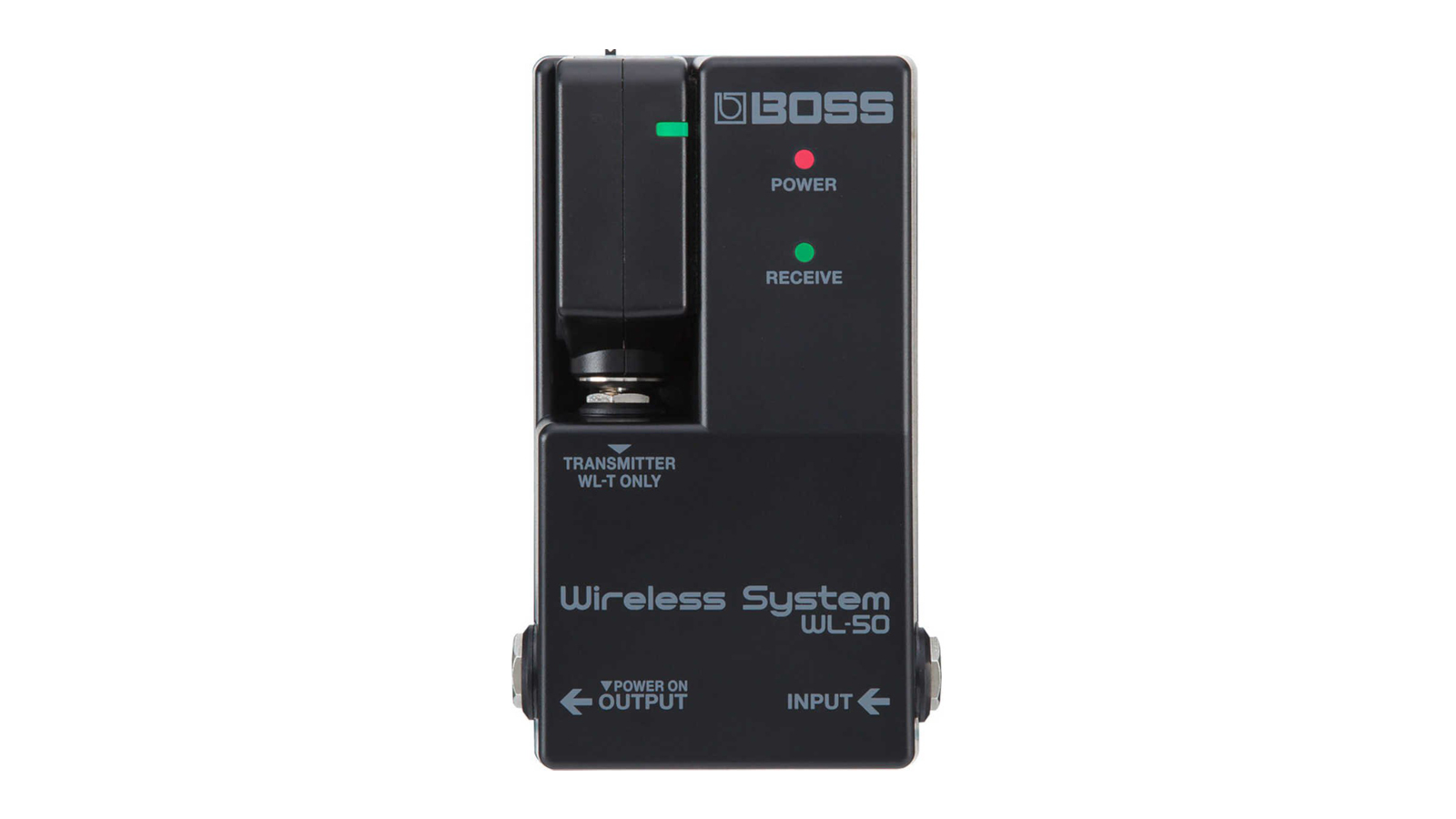
Specifications
Reasons to buy
Reasons to avoid
✅ Buy if you need a wireless system for your pedalboard: Similar in size to a regular Boss stompbox, the WL-50 is perfect for pedalboard users who don't want too much space taken up on their 'board.
❌ Avoid if you have active pickups: Much like the Line 6 G10S, this unit isn't compatible with some active pickups, which is due to the way some active pickup-equipped guitars are wired.
As you might demand of a Boss unit, the WL-50 has a receiver that’s at home on your pedalboard, offering a convenient but excellent sound-quality performance. In our experience, the WL-50 offers ultra-low latency, excellent dynamics, full frequency response and a very respectable 65-foot range - not to mention it also has two onboard cable simulations to mimic the capacitance of a cable - It's exactly what we are looking for in a wireless system.
You’ll get up to 12 hours of playing time from a single charge, while the receiver also has a DC output for powering external pedals. The unit is compatible with most guitars or basses with passive pickups.
Read our full Boss WL-50 review
Best for simplicity
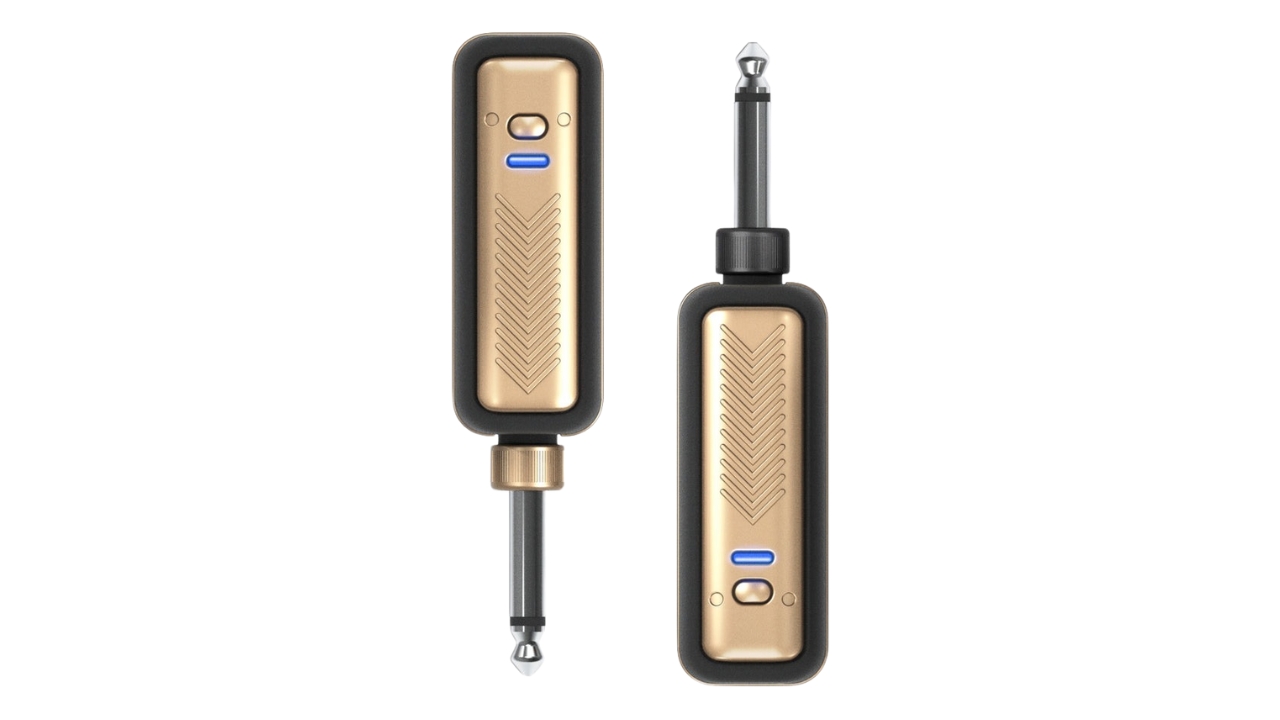
Specifications
Reasons to buy
Reasons to avoid
✅ Buy if you want something easy to set up: Pairing the Positive Grid Spark Link took us less than a minute, making it perfect for first-timers or those who want a fuss-free experience.
❌ Avoid if you want to play live: There's no pedalboard-mounted charging facility, so you'll need a separate phone charger if you want to use them live and prevent any mishaps.
A new offering from everyone’s favorite smart amp manufacturer, the Positive Grid Spark Link is a wireless guitar system that pairs perfectly with the company’s smart amps but is versatile enough to work well anywhere.
It’s only available for preorder at the moment, with units expected to ship in late March, but we managed to get our hands on a version pre-release to run it through its paces. Nearly instantaneous pairing makes it easy to get off the mark, and it's easily one of the simplest wireless units to set up we’ve ever had.
The sound quality is phenomenal, and we managed to walk around our entire house whilst maintaining a signal and even placed it near our WiFi router with no noticeable interference. The only downside for us is that there’s no dedicated charger for mounting on a pedalboard, which could limit some of its potential as a live wireless guitar system.
Read the full Positive Grid Spark Link review
Best value
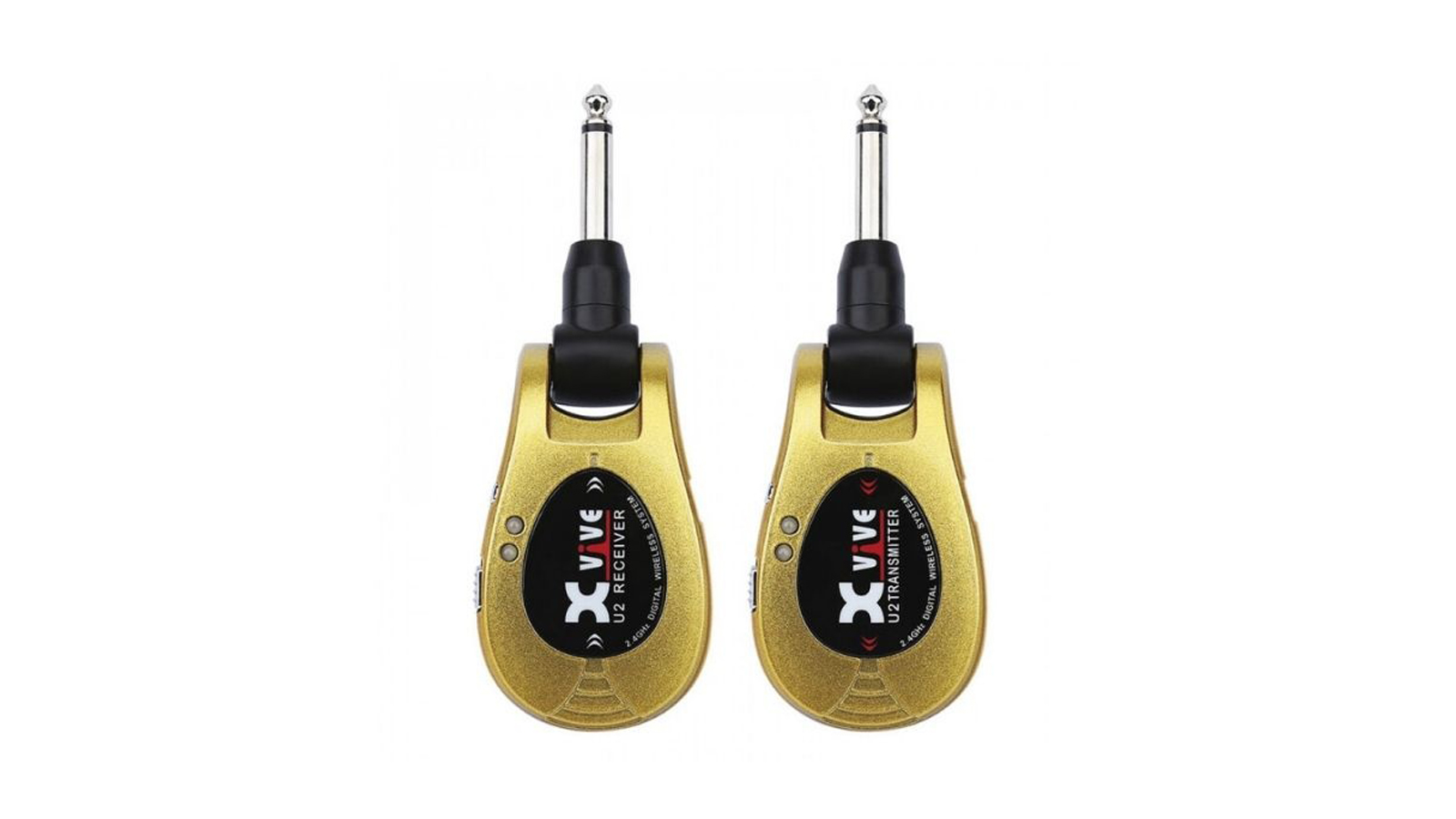
5. XVive U2
Our expert review:
Specifications
Reasons to buy
Reasons to avoid
✅ Buy if you're on a tight budget: This wireless system is dirt cheap compared to some of the others on this list, so perfect for those who have less cash to splash.
❌ Avoid if you care about the look: The dongles here are quite bulky and some dislike the look of them when plugged into their guitars.
Don’t be fooled – for the money and the unassuming dongle construction, XVive’s U2 has a very respectable range, a full frequency response and transfers excellent- quality audio. With only 6ms of latency, there is really little to complain about here - hence why it's also one of our picks for the best cheap wireless guitar systems.
Some might find the transmitter/receiver designs a little primitive, but for an easily configurable wireless system offering this performance and change from 150 bucks, we can live with that.
It comes in a variety of finishes, too, including gold. The rechargeable lithium-ion batteries offer up to five hours of playing time.
Best range
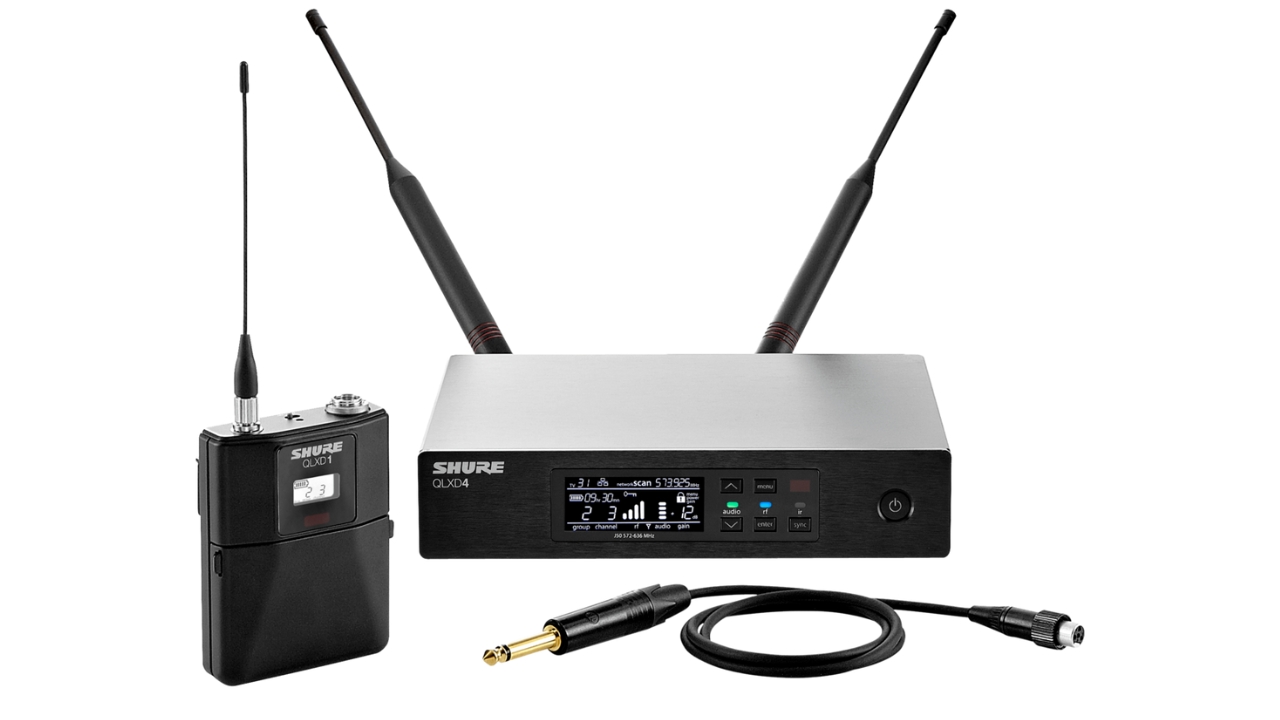
6. Shure QLXD14 Wireless Guitar System
Our expert review:
Specifications
Reasons to buy
Reasons to avoid
✅ Buy if you're a pro player on big stages: The huge range and pro-level features make this wireless unit one of the players of bigger stages and those who really know their stuff.
❌ Avoid if you want something easy to use: Due to the huge array of features, the QLXD14 could prove intimidating for those who've never used a wireless guitar system before.
If you’re playing bigger stages or need a longer-range guitar wireless system, the Shire QLXD14 is a pro-level bit of kit that will have you covered. Packed with easy connectivity and professional-grade functionality, this is a serious bit of kit for the guitar players who really know their stuff.
One for the bigger stages, you’ll need to make sure you purchase one with the correct operating band for wherever you live. Rather than the ‘bug’ style transmitter you get with lower-priced wireless kits, this features a proper bodypack that connects to the receiver at the push of a button.
It’s built for touring with an all-metal construction and comes with a kit to fit it into a rack system too. With 24-bit audio for crystal clear signal transmission and AES 256 encryption, this is the perfect wireless guitar system for players who need a pro-level solution.
More options...
So there you have our top picks, but there are still loads of great options if you're after something a little different. So keep scrolling to see more of our favorite wireless systems for guitar.
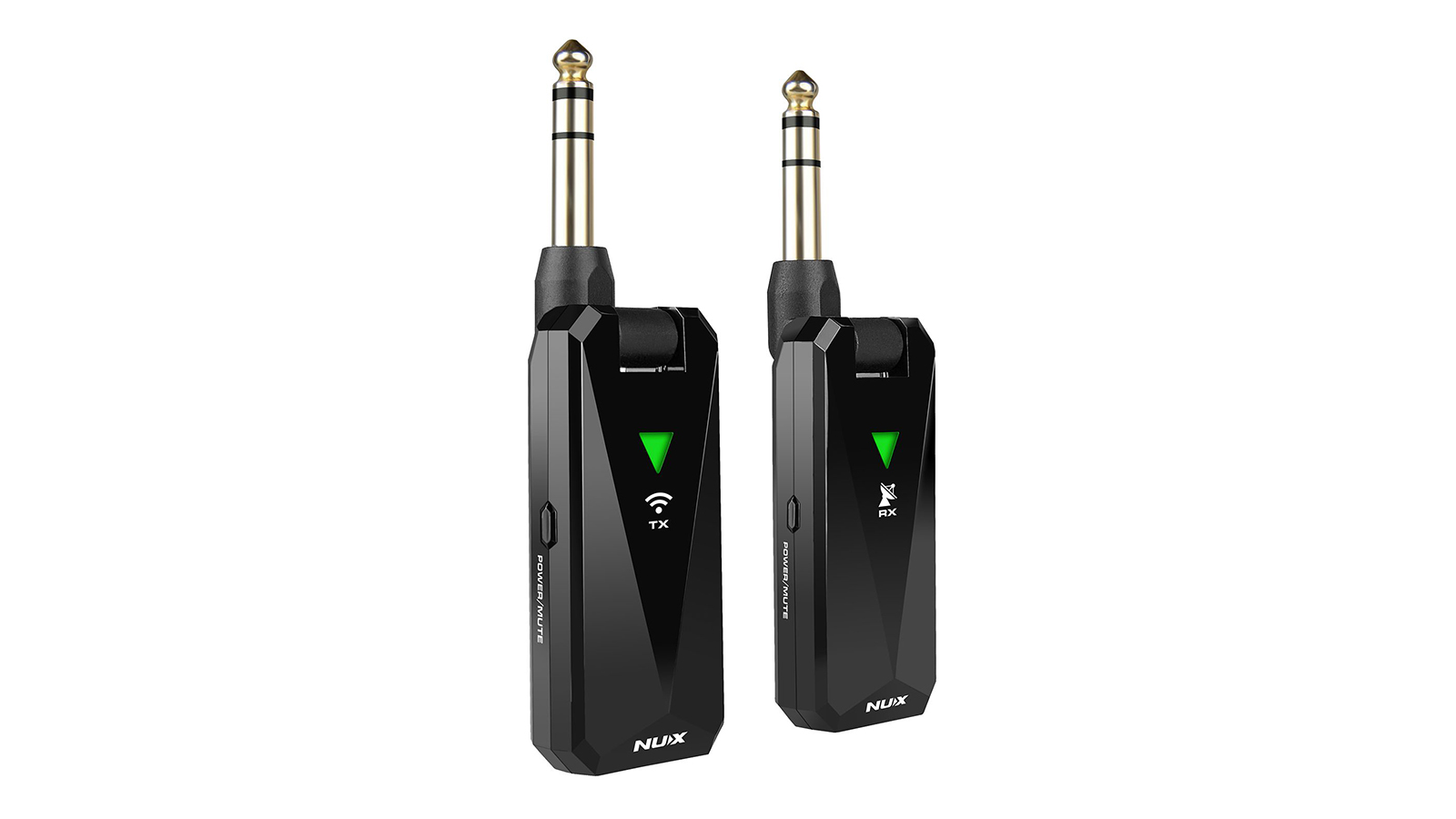
7. NUX B-5RC
Our expert review:
Specifications
Reasons to buy
Reasons to avoid
✅ Buy if you want something easy to use: Setting up and using this wireless system is super simple, making it a great choice for those who want no-frills performance.
❌ Avoid if you play near a router: Some users have reported issues when playing close to their Wi-Fi router, so this may be an issue if you play close to yours.
As far as plug in and play options go, you’re hard pressed to look past the NUX B5RC. A relatively new option on the scene, the B5RC has been designed with usability in mind and can be played right out of the box thanks to its use of automatic frequency matching. It’s also compatible with all types of electric guitars, acoustic-electric guitars, bass guitars and ukuleles, no matter with active or passive, piezo or magnetic pickups, making it a great option for people who need to use it on a few different instruments.
With 15 hours play-time and the inclusion of a portable charge station that can fully charge the unit three times, it’s well suited to life on the road. Factor in it’s high, zero-latency performance and you have a pro quality unit at an amateur-friendly price.
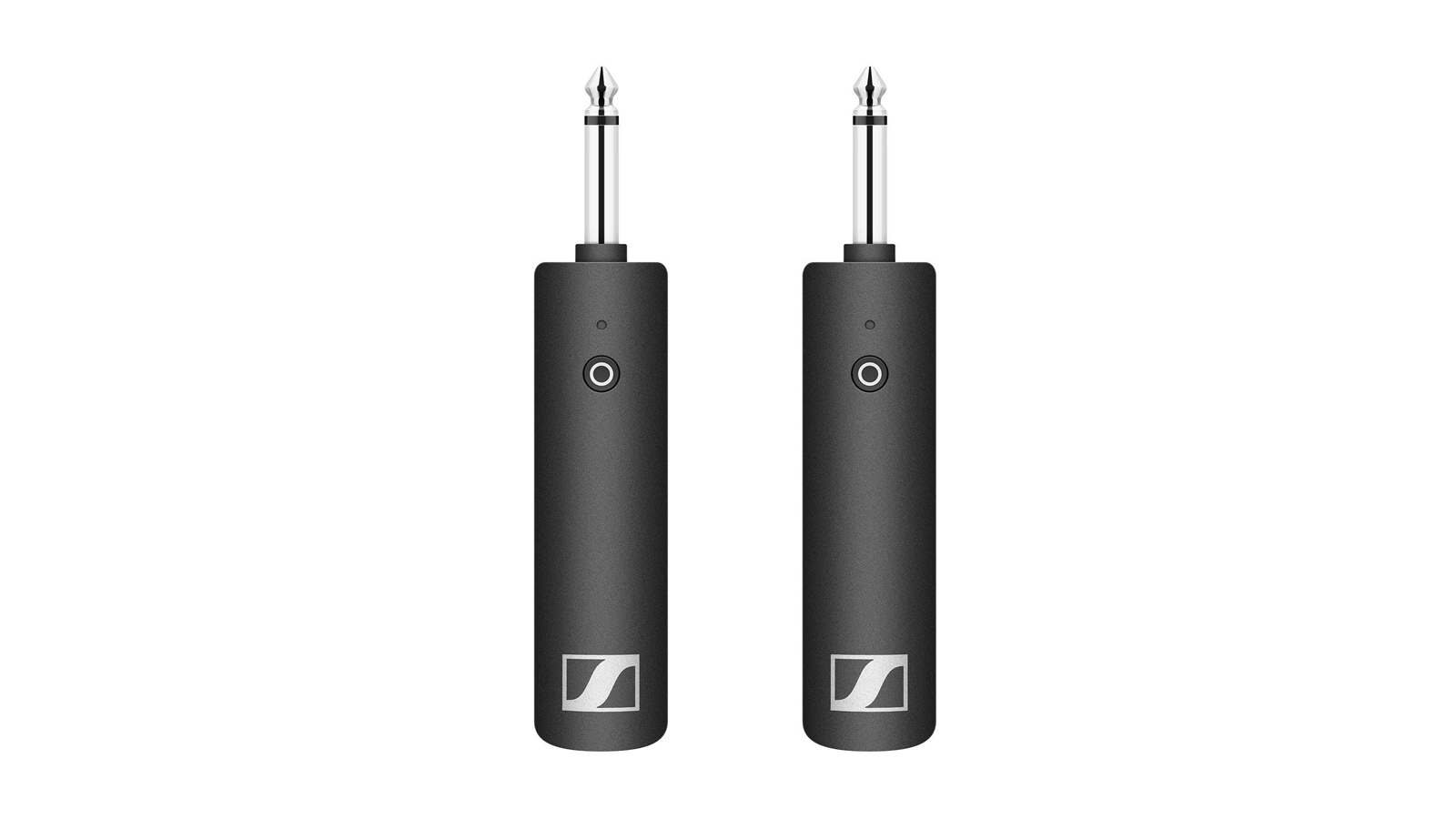
8. Sennheiser XSW-D Instrument Base Set
Our expert review:
Specifications
Reasons to buy
Reasons to avoid
✅ Buy if you need a fast connecting system: With its 'one-touch' setup, this Sennheiser wireless guitar system gets you up and running super quickly.
❌ Avoid if you're on a budget: That quick start tech does come at a cost however, so it's not for those who are on a tight budget.
A smarter take on the dongle transmitter/receiver setup, Sennheiser’s XSW-D set is another wireless system that offers fuss-free use and high performance. In our test, we found the latency to be super-low - less than 4ms - meaning you play without noticing a delay. The XSW-D also boasts a maximum range of 250 feet in optimal conditions, which is more than most of us would need.
What if the conditions are sub-optimal? Well, the transmitter and receiver will flash green and red when the signal gets weak. Charge the system via the attached USB-equipped charger or any USB port.
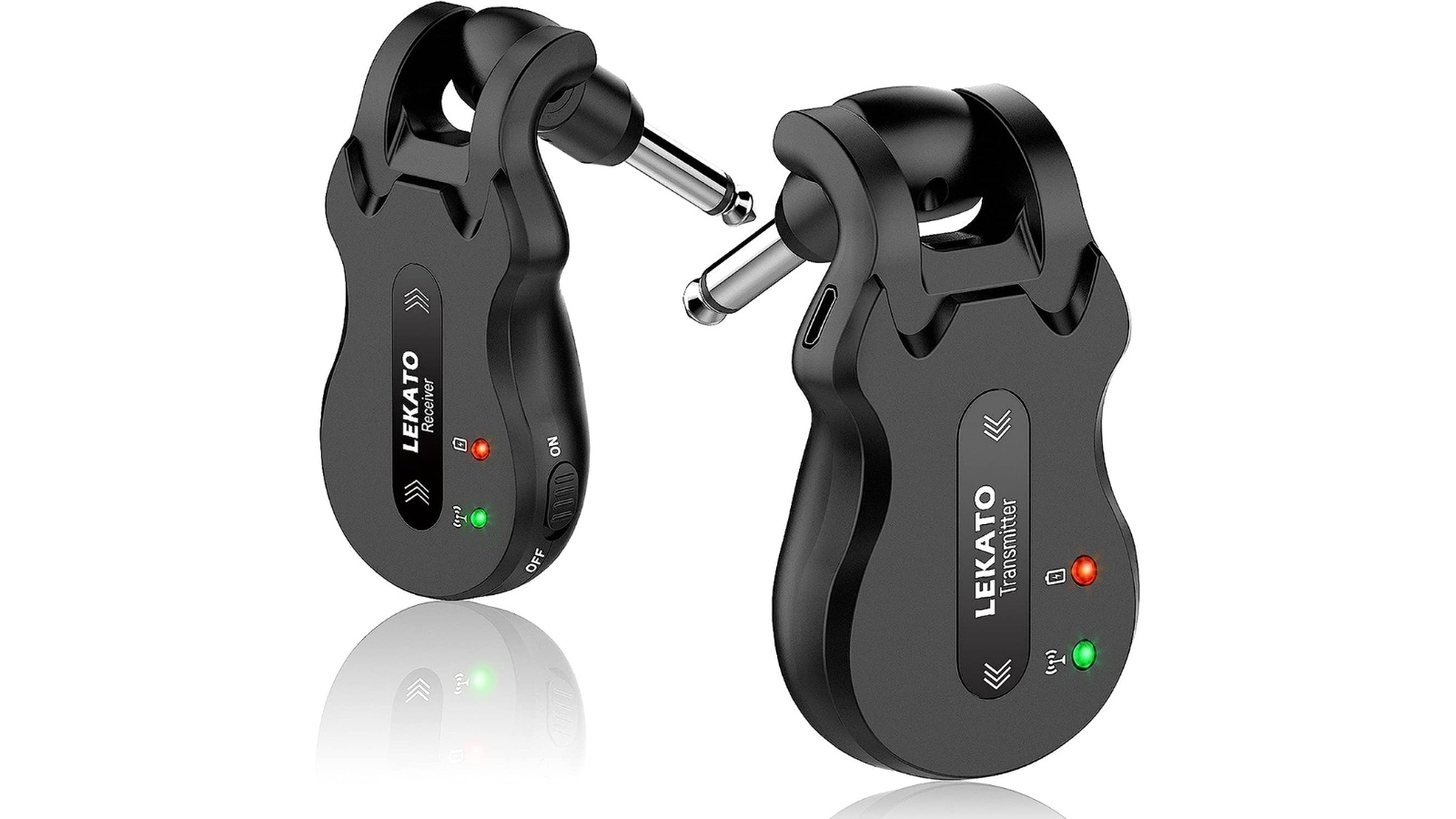
9. Lekato 5.8 GHz Wireless Guitar System
Our expert review:
Specifications
Reasons to buy
Reasons to avoid
✅ Buy if you need a cheap wireless system: This wireless system is excellent value for money, so perfect for those who don't want to spend loads going cable-free.
❌ Avoid if you use active pickups: Once again, this unit could potentially cause issues with certain guitars that feature active electronics.
If you were looking to explore the wireless option and didn’t want to over-invest, you could do a lot worse than the Lekato 5.8 GHz Wireless Guitar System. Firstly, we found that this wireless system is simple to use and set up, and can be used straight out of the box.
Secondly, operating on a 5.8GHz band means it is far less likely to suffer interference from devices operating on 2.5GHz like Wi-Fi and Bluetooth or other household items, so this system gets a tick for that as well. But it’s the price that sets it apart from a lot of others on this list.
It’s easily one of the most reliable and efficient products out there under the $100 mark and even gives some of the more expensive ones a run for their money too. Not quite zero latency, but at 5.6ms this is probably something most people wouldn’t notice anyway. And its 100-foot range is nothing to be sniffed at, making it suitable for even larger-sized stages.
It does, however, only have five hours of working battery life. While that’s enough for most gigs or sessions, it might mean charging the device more often than you’d like.
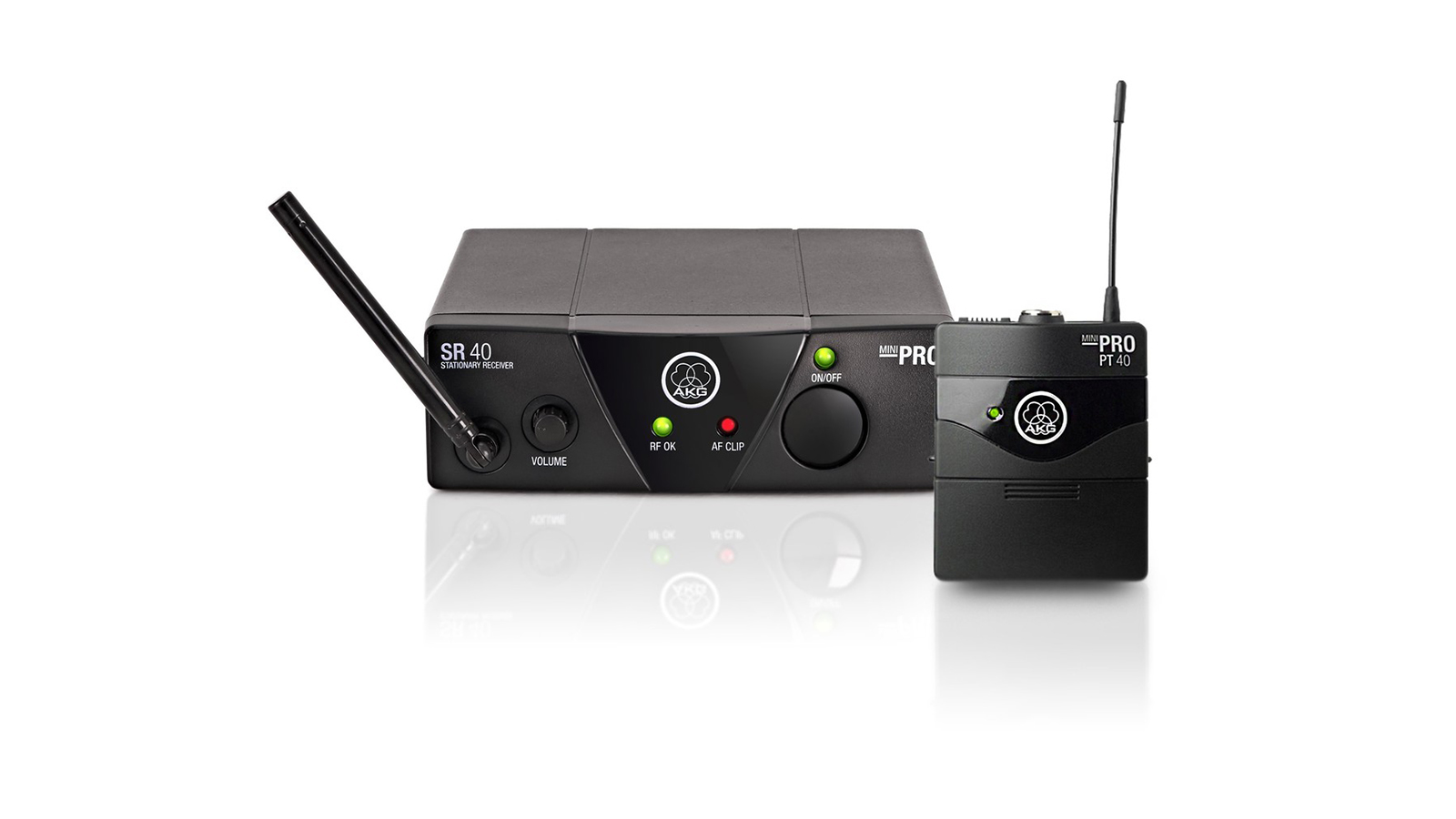
10. AKG WMS40 Mini Wireless Instrument Set
Our expert review:
Specifications
Reasons to buy
Reasons to avoid
✅ Buy if you need long battery life: Boasting a massive 30-hour battery life, this AKG wireless system is great for players who need to play for a long time.
❌ Avoid if you're worried about interference: Some users reported interference when using this unit in certain places, so this may be an issue depending on where you're playing.
AKG is a renowned name in the world of microphones, so you’re in safe hands here. As you might expect, they’re precious about audio, so the WMS40 helps preserve your guitar’s inherent tone and delivers a crystal clear sound. It also comes in at a great price, making this one of the best budget options.
Another great thing about this system is how easy it is to set up and use. It offers a plug and play style operation – basically all you have to do is plug the jack cable into your guitar, attach it to the transmitter – switch it all on and it will find the receiver without having to dial anything in. It really is one of the most fuss-free wireless guitar systems out there and it offers a massive 30 hours battery life. Whilst it’s not the most premium system, it does the job well, plus its compact size makes it even easier when transporting to and from gigs.
Best guitar wireless systems: Buying advice
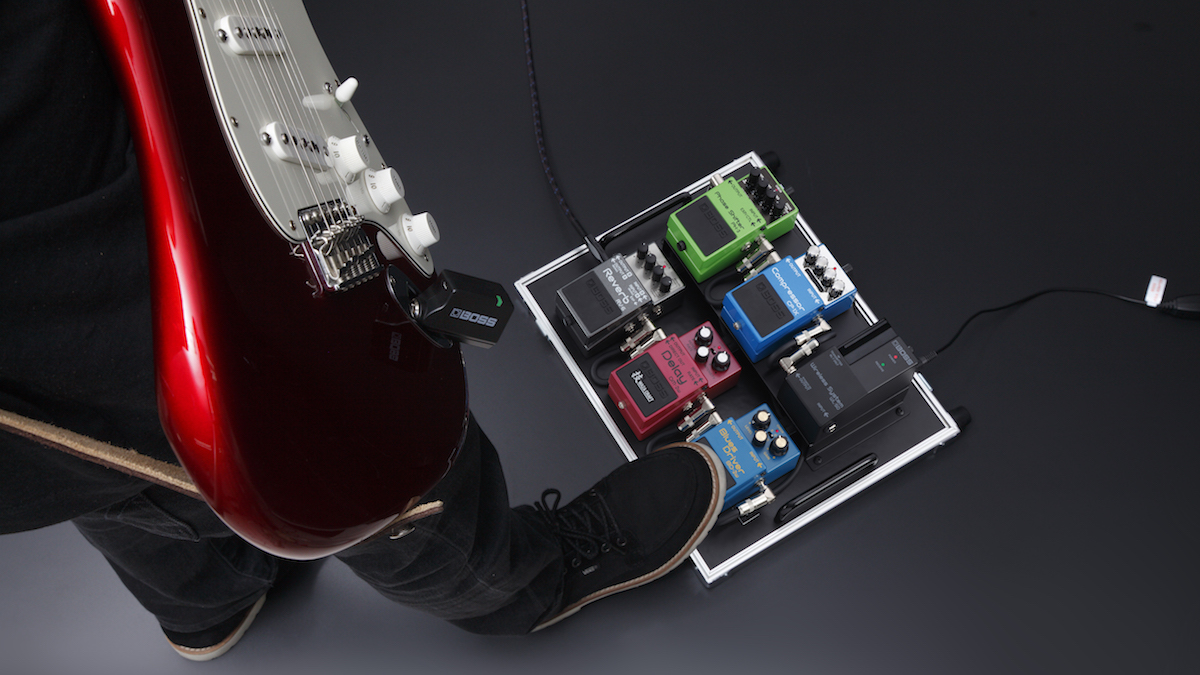
What to look for in the best guitar wireless systems
You can trust Guitar World
When looking to invest in one of the best guitar wireless systems, there's one main thing you should consider before buying. Most of today’s best wireless guitar systems are very easy to use with many offering a 'plug in and play' experience, so you won’t need a background in audio-engineering to set yourself up - but you will need to ask yourself a few questions before taking the plunge.
What is a wireless guitar system?
A wireless guitar system is usually made up of two parts – a transmitter and a receiver. The transmitter normally consists of a jack plug leading into a small pack via a cable that then wirelessly transmits your guitar’s signal to the receiver. In some cases, the transmitter actually has a jack plug built in so this simply plugs into your guitar. The receiver then – yep, you guessed it – receives the signal and sends it on to your amp or pedal via a regular guitar cable.
If your receiver is sat on top of your amp then you’ll only need a really short cable to patch into the front of it. You can mount the receiver onto your pedalboard too – this gives you the freedom to move around as much as you want, but remember, you’ll still need a cable running from your pedalboard to your amp.
The receiver is normally powered by a mains supply – some of the more pedalboard-friendly models accept your typical 9V pedalboard power supply which makes things easier. The receiver is often powered by batteries though many of them now feature a built-in battery, so you just have to make sure you’ve charged it up before use and check out the estimated battery life offered by various models.
Wireless range
Different wireless systems offer different features and wireless ranges. A big consideration should be how far you need it to reach. If you’re playing big stages, or you like to wander around the venue, then look for something that covers a good distance. Having a big wireless range is also really handy during a soundcheck as it lets you roam around the empty venue so that you can hear how you and your band sound in different parts of the room whilst you play. If you’re only playing at home, then don’t worry about range too much, as you’ll probably only need a few meters.
Channels
If you’re playing big or medium-sized shows, then you’ll likely want something that’s of premium quality for reliability. It’s also worth looking for something that offers multiple channel options – if you’re on a bill with another band using wireless equipment, you might get interference if you’re all on the same channel. Having the ability to switch your system to another channel or frequency range should get rid of this.
Quality
Quality plays a part too of course. Generally, the more you pay, the higher the quality. Whilst cheaper stuff might work and do everything that you need it to, some of the more expensive models will likely help retain your guitar’s inherent tone. A better quality transmitter is going to keep the strength of your high and low frequencies so that you still get a really balanced sound and broad frequency range; a must if you’re precious about your tone.
How much should I spend on a guitar wireless system?
This path of wireless system self-discovery starts with probably the most important question - where will you be using it? We all love buying the coolest, best, most expensive version of the product we want, but is there much point when you'll only be using it in your bedroom whilst practicing your stage moves?
Honestly, the answer is no. If you're using a wireless system for anything other than big shows, any of the cheaper or mid-range systems will suffice. The sub-$250 price bracket is packed full of killer choices like the Line 6 Relay G10S, Boss WL50 and NUX B-5RC, all of which would be plenty good enough for any practice session, jam or club show.
Obviously, if you've got more to spend and want the very best, any of the more expensive $250+ options will do you right - with increased durability, larger range and arguably a better tone - although the returns in tonal improvement will be very much diminishing.
Do guitar wireless systems work with active pickups?
Many wireless systems are not compatible with guitars with active pickups because of how the TRS jack output is configured. Always check your guitar and with the manufacturer before you get started. If you find yourself with such an issue, don’t go reversing your jack output just yet – a more simple fix might be to use a 1/4-inch adaptor or a 1/4-inch to 1/4-inch mono patch cable.
How we choose guitar wireless systems

Guitar World is a leading authority in all things guitar gear, with a team of experienced musicians and experts who have tested and reviewed countless guitar products, including many guitar wireless systems. As avid guitar enthusiasts, we understand the importance of achieving the perfect tone whilst eliminating any potential issues with cables.
To create our list of the best guitar wireless systems, we combine our practical experience, user feedback, and in-depth discussions with our editorial team to arrive at a consensus. We evaluate various factors such as pricing, range, latency, battery life, and ease of use to ensure that we showcase the best guitar wireless systems currently available on the market.
As guitar players ourselves, we know that a great wireless system can make a big difference in terms of mobility and can massively enhance your stage presence. That's why we are committed to providing reliable and knowledgeable recommendations to help guitarists find the ideal wireless system to suit their specific needs and preferences. Our ultimate aim is to help guitarists unlock their full potential and deliver a flawless performance with the best guitar wireless systems out there.
Read more about how we test at Guitar World.
Related buyer's guides
- The best desktop guitar amps you can buy today
- Best patch cables: keep things tidy with tiny cables
- Add a tuner with our guide to the best guitar tuners
- Wired for sound: the best guitar cables
- On a budget? Here are the best cheap distortion pedals
Get The Pick Newsletter
All the latest guitar news, interviews, lessons, reviews, deals and more, direct to your inbox!
Jonathan Horsley has been writing about guitars since 2005, playing them since 1990, and regularly contributes to publications including Guitar World, MusicRadar and Total Guitar. He uses Jazz III nylon picks, 10s during the week, 9s at the weekend, and shamefully still struggles with rhythm figure one of Van Halen’s Panama.
- Matt McCrackenJunior Deals Writer
- Richard Blenkinsop
“It holds its own purely as a playable guitar. It’s really cool for the traveling musician – you can bring it on a flight and it fits beneath the seat”: Why Steve Stevens put his name to a foldable guitar
“Finely tuned instruments with effortless playability and one of the best vibratos there is”: PRS Standard 24 Satin and S2 Standard 24 Satin review











